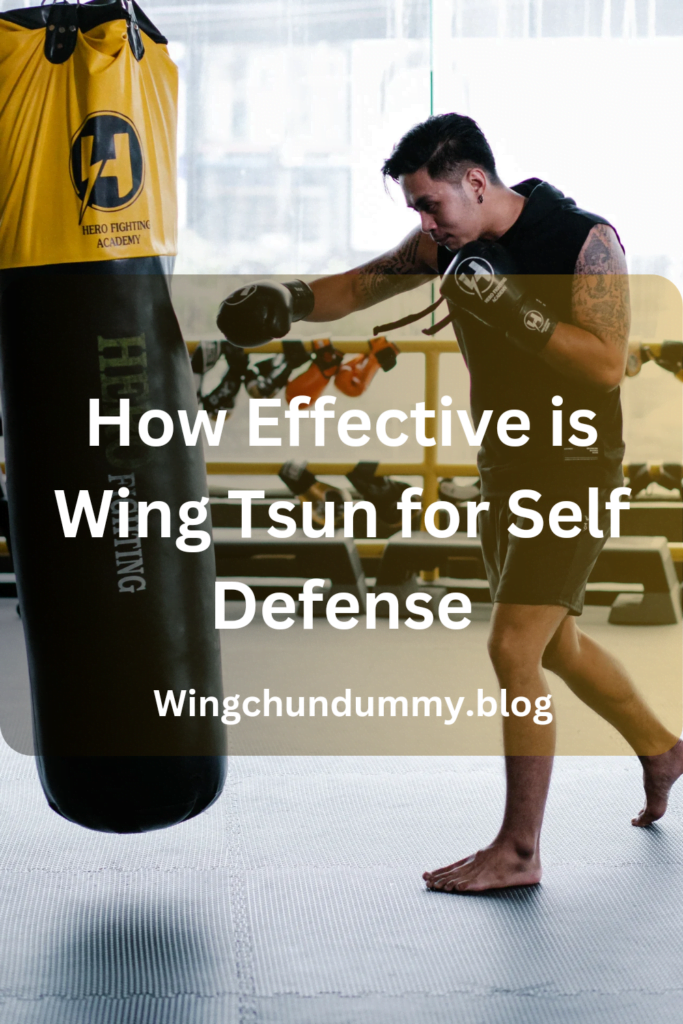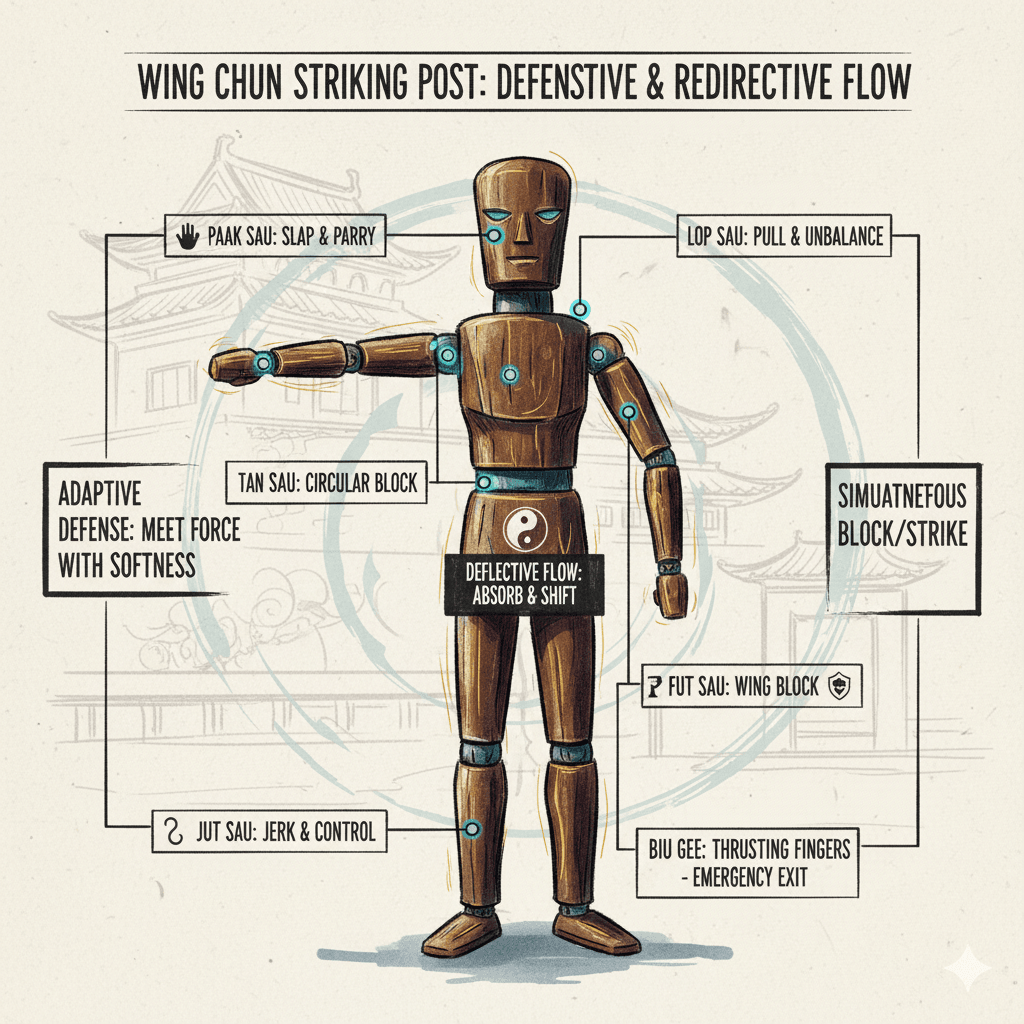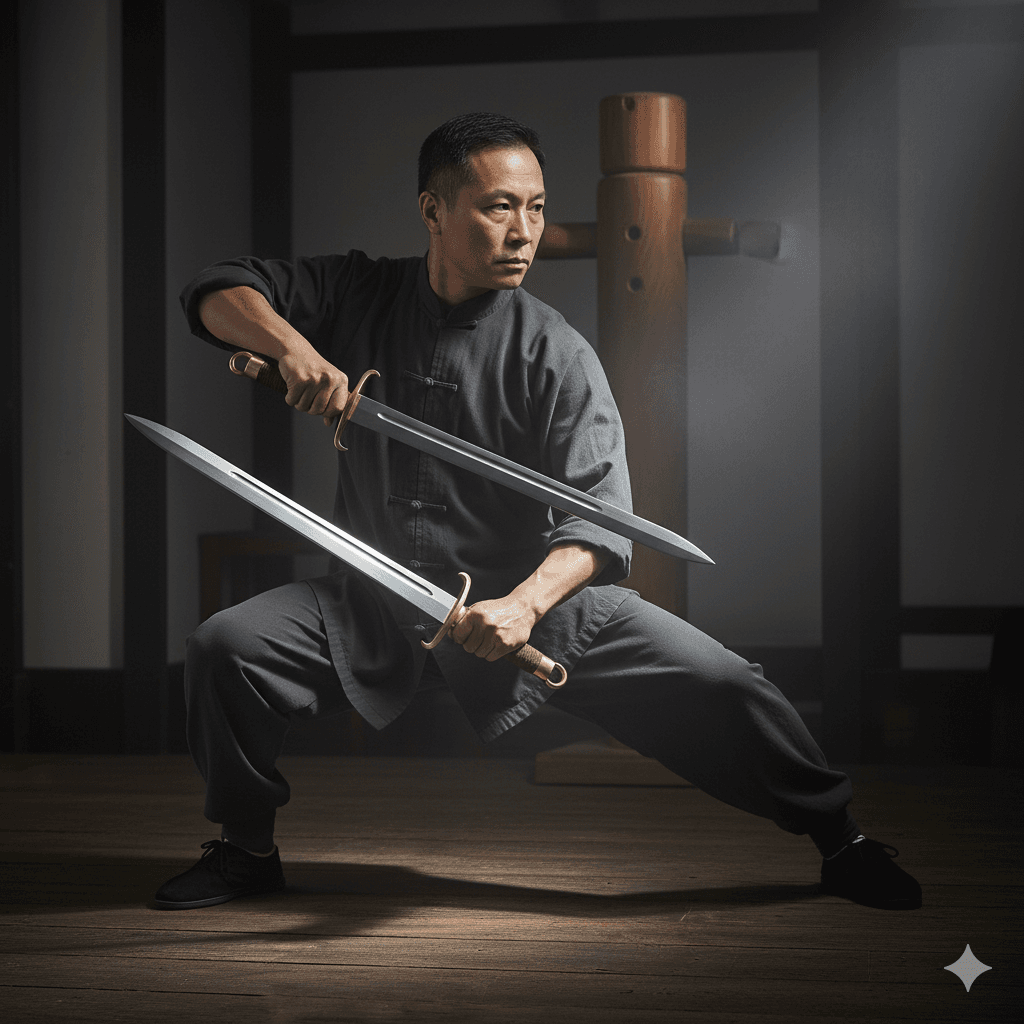Wing Tsun, also spelled Wing Chun, is a traditional Chinese martial art known for its efficiency and practicality in self-defense.
Its origins trace back to the Southern Shaolin Monastery in China during the Qing Dynasty, where it was developed by the Buddhist nun Ng Mui.
Drawing from her deep understanding of Shaolin Kung Fu, Ng Mui crafted Wing Tsun to be a simple yet highly effective combat system.
The style was later refined and popularized by Grandmaster Yip Man in the 20th century.
IP man teachings were instrumental in spreading Wing Tsun globally.
The foundational principles of Wing Tsun revolve around economy of movement, directness, and the use of an opponent’s energy against them.
Unlike many martial arts that emphasize brute strength.
Wing Tsun focuses on sensitivity, timing, and strategic positioning.
Practitioners are taught to maintain a relaxed yet alert state, allowing them to respond swiftly and efficiently to any threat.
The concept of “centerline theory” is pivotal in Wing Tsun.
Emphasizing the protection and control of the central axis of the body, which is considered the most vulnerable area.
Philosophically, Wing Tsun embodies the idea of adaptability and flow.
It encourages practitioners to remain calm and composed under pressure,
using minimal force to achieve maximum effect.
The art’s focus on close-range combat makes it particularly well-suited for self-defense situations where space and time are limited.
Techniques such as simultaneous attack and defense,
redirection of force, and quick, decisive strikes are integral to its practice.
Over the years, Wing Tsun has evolved through various lineages,
each contributing unique interpretations and techniques while preserving the core principles.
Today, it continues to be a popular choice for individuals seeking an effective self-defense system.
Its emphasis on realistic training scenarios and practical application ensures that practitioners are well-prepared to handle real-world confrontations.

Basic Techniques and Movements in Wing Tsun
Wing Tsun, as a martial art, is renowned for its practical and effective self-defense techniques.
At its core, Wing Tsun emphasizes a series of fundamental techniques and movements that are critical for anyone looking to master this discipline.
The basic techniques include punches, kicks, and blocks, each designed to neutralize an opponent swiftly and efficiently.
One of the primary techniques in Wing Tsun is the chain punch, a rapid succession of straight-line punches aimed at overwhelming an opponent’s defenses.
This technique capitalizes on speed and continuous motion, making it difficult for an adversary to counter-attack.
Similarly, Wing Tsun kicks are typically low and targeted at vulnerable areas such as the knees and groin.
These kicks are executed with precision and control, ensuring that the practitioner maintains balance and stability.
Blocks in Wing Tsun are equally critical, designed to deflect attacks rather than absorb them.
The technique known as “Pak Sau” (slapping hand) is a versatile blocking maneuver that redirects an opponent’s strike, creating openings for counter-attacks.
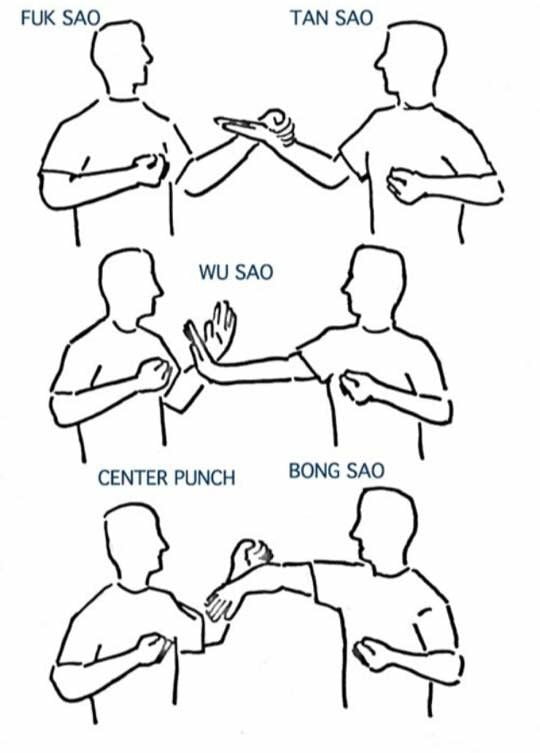
Another fundamental block is “Tan Sau” (palm-up hand), used to intercept and neutralize punches while keeping the practitioner’s centerline protected.
Stance and balance are foundational elements that underpin all Wing Tsun techniques.
The “yee ji kim yeung ma” stance, or character two adduction stance, provides a stable base from which to launch attacks and defend against incoming strikes.
This stance ensures that practitioners remain grounded, enhancing their ability to generate power and maintain fluidity of motion.
Fluidity is a hallmark of Wing Tsun, with movements designed to be smooth and continuous.
This seamless transition between techniques ensures that practitioners can adapt to the dynamic nature of real-world self-defense scenarios.
By maintaining fluidity, Wing Tsun practitioners are better equipped to handle multiple attackers and changing situations,
making it an effective martial art for practical self-defense.
In conclusion, the basic techniques and movements in Wing Tsun are meticulously crafted to provide a robust framework for self-defense.
By mastering punches, kicks, and blocks, and emphasizing stance, balance, and fluidity,
practitioners can effectively protect themselves in real-world situations.
Wing Tsun, a martial art renowned for its practicality in self-defense,
employs a variety of training methods and drills to hone the skills of practitioners.
Central to Wing Tsun training are partner drills,
which foster real-world application by allowing individuals to practice techniques against a resisting opponent.
These drills simulate actual combat scenarios, thereby enhancing one’s ability to respond effectively under pressure.
Chi Sau, or “sticky hands,” is a quintessential partner drill in Wing Tsun that emphasizes sensitivity and reflexive responses.
Through Chi Sau, practitioners develop a heightened sense of touch and the ability to adapt to the opponent’s movements instantaneously.
Solo drills are equally vital in Wing Tsun training,
Focusing on the precise execution of techniques without a partner.
These drills are designed to build muscle memory and ensure that movements become second nature.
Forms, such as Siu Nim Tau, Chum Kiu, and Biu Jee,
Each form consists of a sequence of movements that not only teach offensive and defensive techniques but also enhance balance,
coordination, and internal energy flow.
Equipment training further complements the comprehensive training regimen in Wing Tsun.
Wooden dummy training, for instance, plays a crucial role in refining striking techniques and improving structural alignment.
The wooden dummy acts as an unyielding opponent, allowing practitioners to perfect their angles of attack and defense.
Additionally, training with focus mitts and punch bags helps develop power and accuracy, while also providing a safe environment to practice full-force strikes.
Consistent practice ensures that techniques become ingrained in the practitioner’s subconscious, allowing for swift and instinctive responses in real-life situations.
Reflexive responses, honed through continuous drills, enable practitioners to react to threats with minimal delay, thereby enhancing their defensive capabilities.
Scenario-Based Training
Scenario-based training is a pivotal aspect of Wing Tsun, focusing on real-world application rather than solely on theoretical knowledge or choreographed sequences.
This form of training immerses practitioners in simulated self-defense situations, thereby enhancing their ability to respond effectively under pressure.
Through these simulations, they learn to apply Wing Tsun techniques dynamically, adapting to the unpredictable nature of real-life encounters.
In another common situation, where the attacker throws a punch, Wing Tsun practitioners employ deflection and counter-strike methods.
Such as Tan Sau (palm-up block) and a simultaneous punch to neutralize the threat.
These practical drills are crucial in honing a practitioner’s reflexes and ensuring they can perform under stress.
Adaptability and quick decision-making are essential components of scenario-based training in Wing Tsun.
Unlike static training methods, this approach requires practitioners to think on their feet and make rapid, informed decisions.
This not only improves their technical skills but also builds mental resilience.
The ability to quickly assess a situation and choose the appropriate response can often mean the difference between safety and harm.
Through consistent practice in these varied scenarios, Wing Tsun students develop a profound understanding of their capabilities and limitations.
This self-awareness, combined with the ability to adapt techniques to different situations, significantly enhances the effectiveness of Wing Tsun as a self-defense system.
Real-World Applications and Effectiveness
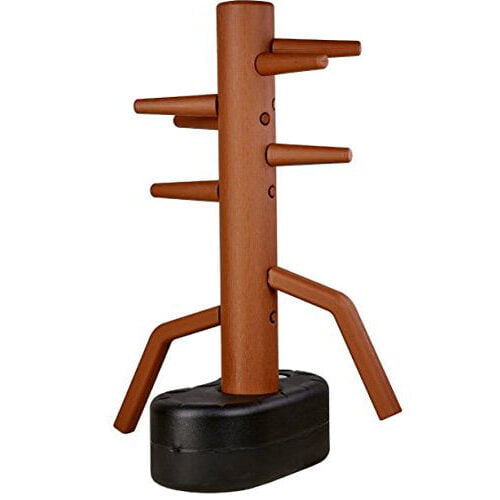
Several case studies highlight instances where practitioners have successfully utilized Wing Tsun techniques to protect themselves.
For example, a notable case involved a female practitioner in Hong Kong who effectively defended herself against an attacker using Wing Tsun’s rapid, close-range strikes and defensive maneuvers.
Testimonials from practitioners further underscore the martial art’s practical applications.
John, a long-time practitioner, recounts a situation in which he was able to neutralize a potential threat in a parking lot.
By employing Wing Tsun’s principles of redirecting force and exploiting an opponent’s vulnerabilities.
He managed to de-escalate the situation without sustaining any injuries.
Similarly, Maria, another dedicated student, shares her experience of fending off a mugger by applying the art’s simultaneous attack and defense techniques.
Research and statistical data also support the effectiveness of Wing Tsun in self-defense scenarios.
A study conducted by the University of Hong Kong analyzed the outcomes of confrontations involving Wing Tsun practitioners and found a high success rate in self-defense situations.

The study revealed that individuals trained in Wing Tsun were able to effectively defend themselves in 85% of the documented incidents,
highlighting the martial art’s practicality.
Furthermore, Wing Tsun’s emphasis on situational awareness and adaptability makes it particularly suitable for real-world applications.
This comprehensive approach not only enhances physical defense capabilities.
but also fosters a mindset geared towards personal safety and conflict avoidance.
In summary, through a combination of case studies, personal testimonials, and empirical research.
it is evident that Wing Tsun is a highly effective martial art for self-defense.
Its real-world applications and proven success rate make it a valuable skill for individuals seeking to enhance their personal safety and self-defense abilities.
Strengths and Advantages of Wing Tsun for Self Defense
One of its primary strengths is its emphasis on efficiency and economy of movement.
Unlike other martial arts that may rely on brute strength or elaborate techniques, Wing Tsun prioritizes direct and effective actions.
This focus on simplicity allows practitioners to quickly neutralize threats, making it particularly advantageous in real-life self-defense scenarios where time and efficiency are crucial.
Another significant advantage of Wing Tsun is its ability to adapt to the physical capabilities of the practitioner.
By leveraging the opponent’s force against them,
Wing Tsun enables smaller or physically weaker individuals to defend themselves effectively against larger attackers.
Psychological preparedness is another essential aspect of self-defense, and Wing Tsun excels in this area as well.
Training in Wing Tsun helps build confidence and mental resilience.
The repetitive practice of techniques under simulated stress conditions equips practitioners with the mental fortitude to remain calm and composed during actual confrontations.
This psychological edge can be as crucial as physical prowess in ensuring personal safety.
Moreover, Wing Tsun’s training regimen includes drills that simulate real-world scenarios, helping practitioners develop situational awareness.
The emphasis on close-range combat and quick reflexes further enhances the practitioner’s ability to handle unexpected threats.
Incorporating Wing Tsun into one’s self-defense repertoire offers a well-rounded approach that combines physical techniques with mental preparedness.
Its focus on efficiency, adaptability, and psychological strength make it a highly effective martial art for self-defense,
providing practitioners with the tools they need to protect themselves in various situations.
Limitations and Criticisms
While Wing Tsun is often lauded for its practical techniques and focus on real-world application,
it is not without its limitations and criticisms in the realm of self-defense. One of the primary criticisms is its emphasis on close-range combat.
While this can be advantageous in certain scenarios,
it may be less effective in situations where the attacker maintains a distance or uses long-range weapons.
The intricate techniques and stances require substantial practice to master,
and in high-stress situations, less experienced practitioners might struggle to effectively execute them.
Another area where Wing Tsun may fall short is in its lack of grappling and ground-fighting techniques. Unlike Brazilian Jiu-Jitsu or Judo,
which place significant emphasis on ground combat, Wing Tsun primarily focuses on striking and standing techniques.
This can be a disadvantage if the confrontation goes to the ground,
where practitioners might find themselves ill-equipped to defend effectively.
Additionally,
Critics argue that these methods may not fully prepare individuals for the unpredictable and dynamic nature of real-world altercations. The repetition of forms and techniques,
while beneficial for muscle memory and skill development,

might not translate seamlessly to practical application without supplementary sparring or scenario-based training.
Common misconceptions about Wing Tsun also contribute to its criticisms.
Some people mistakenly believe that mastering Wing Tsun alone is sufficient for all self-defense situations.
However, it is essential to acknowledge that no single martial art or defense system is universally effective.
A balanced view recognizes that while Wing Tsun has its strengths, such as quick reflexive responses and efficient close-quarters techniques,
it is most effective when complemented with knowledge from other martial arts or self-defense systems.
Conclusion: Is Wing Tsun Right for You?
Throughout this blog post, we’ve explored the various aspects of Wing Tsun as a self-defense system.
We’ve discussed its historical roots, unique techniques, and the principles that set it apart from other martial arts.
The effectiveness of Wing Tsun lies in its emphasis on practicality,
adaptability, and efficiency, making it a compelling choice for those seeking a reliable method of self-defense.
If confuse – Wing Tsun is the right fit for you.
Consider your personal goal and physical capabilities.
Wing Tsun’s depends on different body types and levels of fitness,
focusing on leveraging an opponent’s force rather than relying solely on strength.
This can be particularly advantageous for individuals who may not possess significant physical power.
Another key factor in making your decision is the quality of instruction.
Wing Tsun requires precise technique and understanding of its core principles to be effective.
Therefore, it is essential to seek out qualified instructors who have a deep knowledge of the art and can provide tailored guidance.
Many schools offer trial classes, which can be an excellent opportunity to experience Wing Tsun firsthand and assess whether it aligns with your self-defense goals.
Moreover, consider how Wing Tsun aligns with your lifestyle and long-term aspirations.
The discipline and mental focus required in Wing Tsun training can extend beyond physical self-defense, offering benefits in areas such as stress reduction,
confidence building, and overall well-being.
Reflect on how these aspects resonate with your personal development goals.
By engaging with qualified instructors and actively participating in classes,
you can gain a clearer understanding of how this martial art can serve your self-defense needs and contribute to your overall personal growth.

